Introduction
The Middle Ages, often called the medieval period, spanned roughly a thousand years from 500 AD to 1500 AD. This era in European history was a time of great transformation, conflict, and innovation. From chivalrous knights and grand castles to brutal battles and the Black Death, the Middle Ages evoke a complex mix of romanticism and the realities of the time. Let’s unveil some of the period’s most captivating secrets with these 15 fascinating facts.
15 Fascinating Facts About Medieval Times
- Peasant life wasn’t all doom and gloom.
- Animals could be put on trial for crimes.
- Football was a violent and chaotic affair.
- Bathing was more common than you might think.
- “Romantic” marriages were mostly for the wealthy.
- Medieval medicine could be bizarre and brutal.
- Fashion took some extravagant turns.
- Table manners left much to be desired.
- Unicorns were real (well, sort of).
- Superstitions played a prominent role in daily life.
- Homes were multi-generational and multifunctional.
- Most people never traveled far from where they were born.
- The wealthy flaunted their status with pet squirrels.
- Jesters were more than just entertainment.
- Books were incredibly rare and precious.
Fact 1. Peasant life wasn’t all doom and gloom.
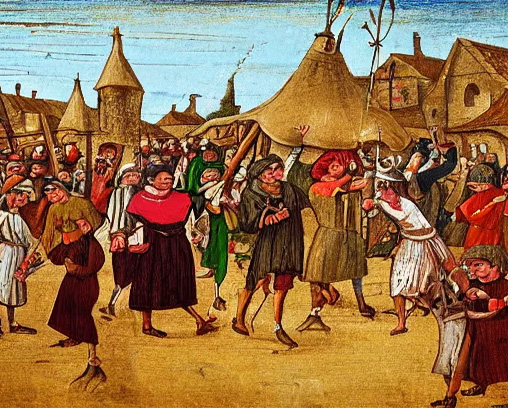
Contrary to popular depictions, peasants weren’t constantly miserable. While life was undeniably hard, they also had festivals, holidays, games, and enjoyed moments of joy within their communities. They celebrated religious events, attended markets, played simple sports, and even had time for storytelling and music.
Fact 2. Animals could be put on trial for crimes.
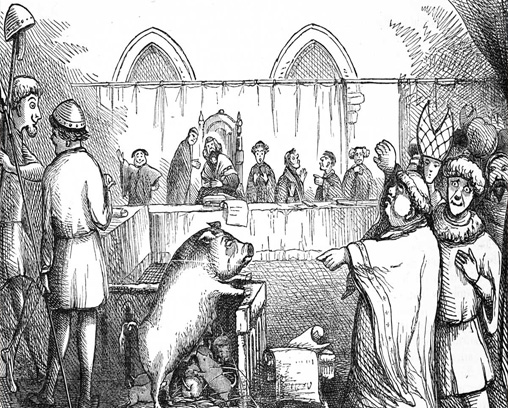
Animals were often treated as if they bore moral responsibility for their actions. Creatures ranging from insects to pigs were summoned before courts, with some even receiving death sentences. These trials reflected a belief that animals were capable of understanding right and wrong and a desire to maintain order in both human and natural realms.
Fact 3. Football was a violent and chaotic affair.
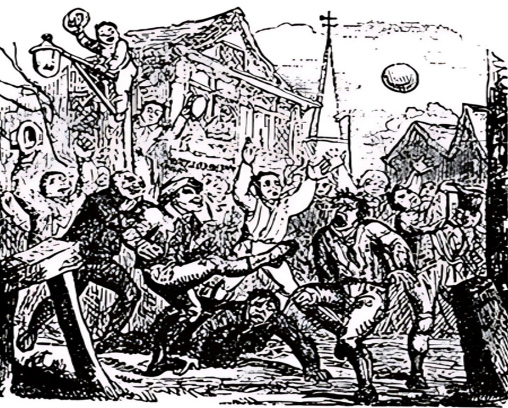
Medieval football (more like mob football) resembled mass brawls more than modern sports. Matches could involve entire villages, few rules existed, and serious injuries were commonplace. It was less about skill and more a display of strength, with goals often being miles apart.
Read More: 15 Surprising Renaissance Facts You Won’t Believe Are True
Fact 4. Bathing was more common than you might think.
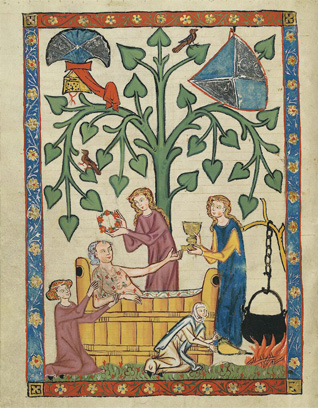
Although hygiene standards differed from ours, medieval people understood the importance of bathing. Public bathhouses were common, and people of all classes made attempts to stay clean. While not daily baths as we know, they washed regularly, used soap, and appreciated the social aspects of bathhouses.
Fact 5. “Romantic” marriages were mostly for the wealthy.
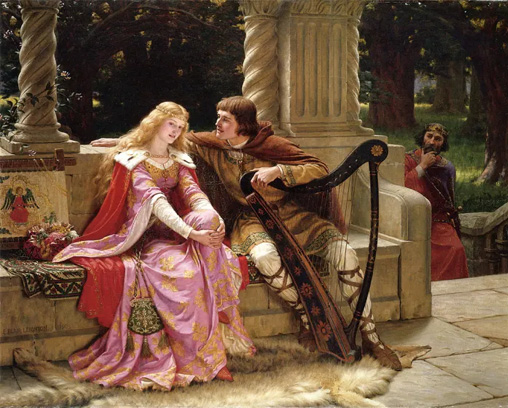
For peasants and lower classes, marriage was often a practical arrangement focused on economic survival. Love was secondary to combining land, labor, and securing a family’s future. Romantic love was a luxury primarily experienced by the upper echelons of society, featured in songs and poems of the time.
Fact 6. Medieval medicine could be bizarre and brutal.
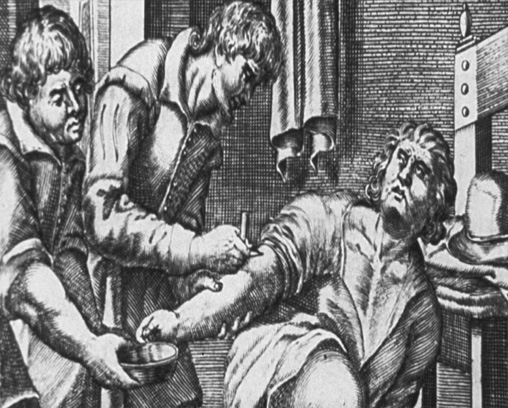
Image credit: National Library of Medicine
Medieval medicine was a mix of traditional herbal remedies, some effective elements, and a whole lot of superstition. Treatments could include bloodletting, balancing “humors,” and even magical incantations. Doctors were few and far between, but there was knowledge of herbs and practical surgery that was surprisingly advanced for the time.
Fact 7. Fashion took some extravagant turns.
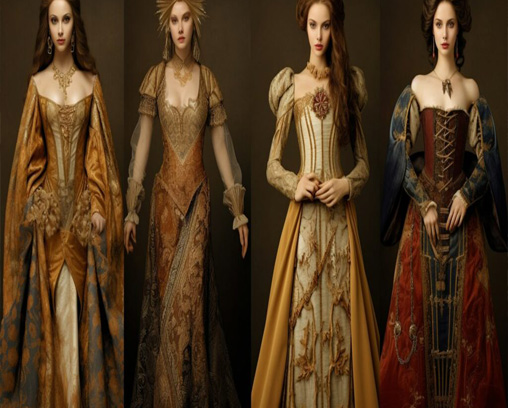
The wealthy went to great lengths to stand out. This included long, pointed shoes called poulaines, absurdly tall hats, and clothing emblazoned with jewels and bright colors. Fashion was a display of status, so the more outrageous, the better for those who could afford it.
Read More: The Top 15 Inventions That Changed the World | Discover Their Impact
Fact 8. Table manners left much to be desired.
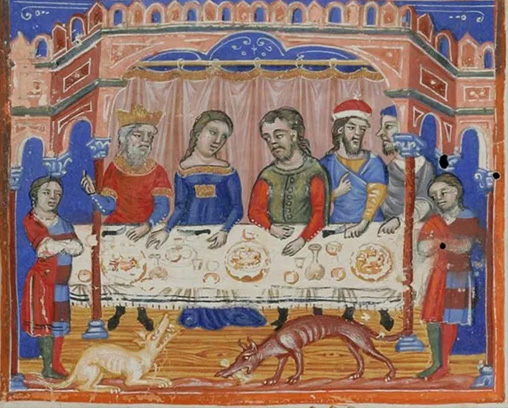
Dining etiquette, as we know it, didn’t exist. Eating with your hands, sharing cups, throwing bones on the floor, and belching were the norm. Even at fancy feasts, table manners were far rougher than we’d be comfortable with today.
Fact 9. Unicorns were real (well, sort of).
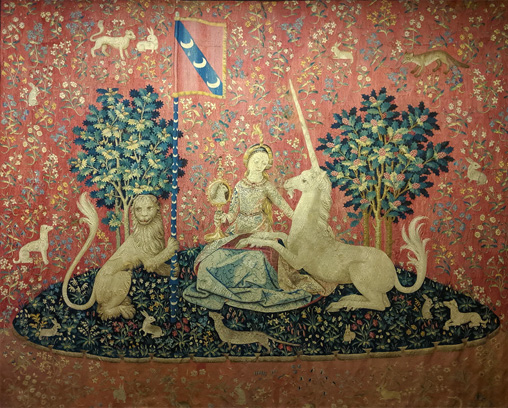
Medieval bestiaries featured unicorns, though their depiction was closer to a goat with a single horn. Rumors of unicorns likely stemmed from sightings of rhinoceroses or the tusks of narwhals. The unicorn became a symbol of purity and power, often featured in art and literature.
Fact 10. Superstitions played a prominent role in daily life.
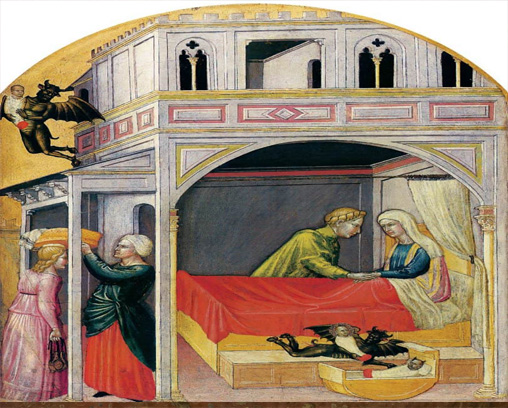
From black cats to spilled salt, medieval people were deeply superstitious. Beliefs about lucky charms, omens, and witches influenced their actions and worldviews. These superstitions were a way to make sense of an unpredictable world and attempt to exert some control over misfortune.
Fact 11. Homes were multi-generational and multifunctional.
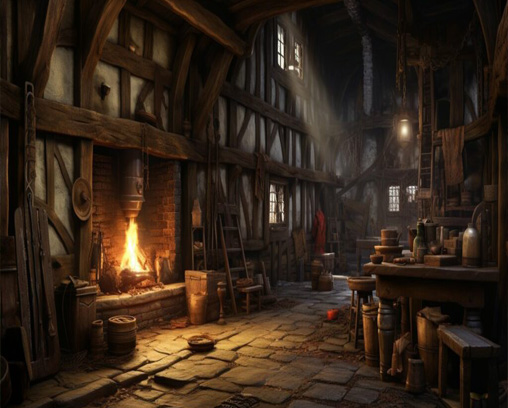
Peasant homes weren’t just for sleeping. They were also where you worked, prepared food, housed animals during harsh weather, and spent time with extended family. Privacy was a luxury, and living spaces were shared between humans and sometimes livestock.
Read More: 15 Legendary Lost Treasures: Fact, Fiction, and the Hunt Continues
Fact 12. Most people never traveled far from where they were born.
Travel was time-consuming, expensive, and sometimes dangerous. For most peasants, their world revolved around their village or local town. Journeys were undertaken for necessary reasons like pilgrimage or trade, but for most, their understanding of the world was incredibly limited by their circumstances.
Fact 13. The wealthy flaunted their status with pet squirrels.
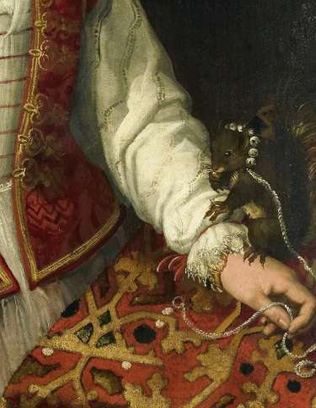
Exotic pets were a way for the rich to show off. Squirrels were surprisingly popular, often depicted in medieval art on leashes and adorned with tiny collars. These playful creatures were a symbol of wealth and leisure.
Fact 14. Jesters were more than just entertainment.
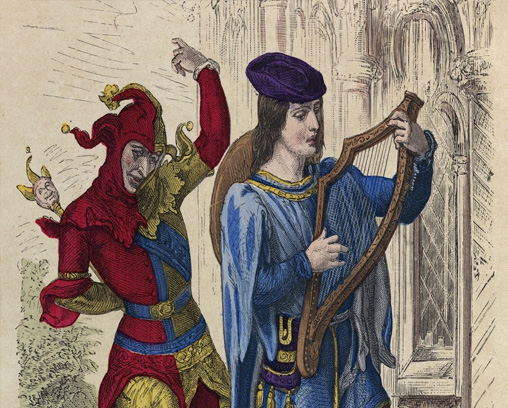
Court jesters wore brightly colored, mismatched outfits and entertained with jokes, acrobatics, and music. Yet, they were also allowed to critique and mock those in power in a way few others could, adding a unique layer to the social fabric of a court.
Fact 15. Books were incredibly rare and precious.
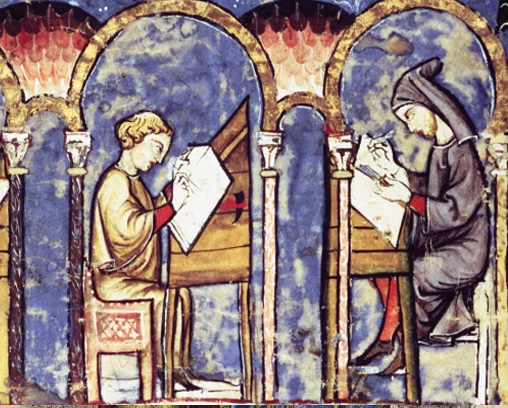
Before the printing press, books were painstakingly handwritten, usually by monks. This made them incredibly expensive and accessible only to a tiny, wealthy elite. Books were valued treasures, often chained within libraries to prevent theft.
Conclusion:
The Middle Ages were a complex and captivating time. Through these fascinating facts, we gain a glimpse into both the familiar and the strange, highlighting the contrasts between their lives and our own. This was a period of contradiction, where hardship coexisted with joy, grim realities intersected with fantastical beliefs, and brutal practices mingled with sparks of innovation.
15 FAQs(Most Asked Questions):
-
What was the Black Death and how did it impact Medieval Europe?
The Black Death was a devastating bubonic plague pandemic that ravaged Europe in the mid-14th century. It’s estimated to have killed between 30-60% of Europe’s population. This had a profound societal impact. Labor shortages led to better conditions for some peasants, social upheaval challenged existing power structures, and a deep preoccupation with death was reflected in the art and attitudes of the time.
-
Were women completely powerless in Medieval society?
While women faced severe limitations compared to today, their roles were more complex than simple powerlessness. Peasant women worked alongside men in the fields. Women could manage businesses, some became skilled artisans, and a select few noblewomen even held positions of significant power. Nuns could gain education and influence within the convent. Yet, they remained largely excluded from formal positions of power and subject to the rules of a patriarchal society.
-
What was the role of the Church in Medieval Times?
The Catholic Church held immense power and influence. It was the center of religious life, which permeated every aspect of society. The Church also controlled vast amounts of land and wealth. It was a place for education (mostly reserved for those entering religious orders), and played a role in politics and law. For many, the Church offered hope of salvation, but also could be a source of fear and control.
-
Was everyone in Medieval Times uneducated?
The vast majority of the population, especially peasants, were illiterate. Education was primarily available to sons of the wealthy and those entering the Church. However, there were a growing number of universities founded in this period, indicating a hunger for knowledge within certain segments of society. Furthermore, there was a rich tradition of oral storytelling and practical ‘know-how’ passed down through generations
-
Were Medieval battles as chaotic as they are portrayed in movies?
Yes and no. While there’s certainly some Hollywood exaggeration, medieval battles lacked the modern organization and discipline we might imagine. Tactics could be crude, communication on the battlefield was difficult, and battles often descended into chaotic brawls. However, there were also skilled knights, archers wielding powerful longbows, and siege warfare that had its own level of brutal strategy.
-
What was the purpose of tournaments?
Tournaments, with their jousting and mock battles, weren’t just for show. They honed a knight’s combat skills, vital in a warlike age. They were also massive social occasions, drawing crowds and serving as opportunities for knights to display their wealth, prowess, and attract patronage from powerful lords.
-
Did Robin Hood exist?
The legend of Robin Hood is enduring, but the true origin is murky. There’s no concrete historical figure, yet ballads of an outlaw hero fighting for the downtrodden date back to Medieval Times. Whether inspired by a real person or a composite figure, the Robin Hood story reflects social tensions of the era and the enduring desire for a hero who stands up for justice.
-
Were castles cold and damp?
Yes! Stone castles, while imposing, weren’t designed for comfort. Drafty rooms, inadequate heating, and stone floors meant castles were perpetually damp and chilly. Tapestries helped a bit, and grand rooms prioritized spectacle over cozy living.
-
Did travel happen in Medieval Times?
Absolutely, but it was far slower and riskier than today. Most peasants rarely ventured beyond their village. Pilgrimage was a major reason for travel, along with merchants journeying to fairs. Roads were rough, and dangers like bandits were a real threat.
-
Was Medieval medicine always harmful?
Contrary to solely barbaric depictions, medieval medicine had its successes. They had surprisingly advanced knowledge of wound care, some effective herbal remedies, and surgeons could set bones or perform amputations. Yet, this knowledge co-existed with useless and often dangerous practices driven by a limited understanding of the human body.
-
What did medieval people wear?
Clothing varied by class. Peasants wore simple, practical clothes made of wool or linen – tunics, leggings, and dresses. The wealthy favored finer fabrics like silk, brightly colored dyes, and more elaborate garments. However, everyone’s clothing was constructed by hand, making it a time-consuming and valuable commodity.
-
Did medieval people brush their teeth?
While they didn’t have modern toothbrushes and toothpaste, they recognized the importance of oral care. Methods included rubbing teeth with rough cloths, using herbal mixtures, and chewing on mint leaves or sticks to freshen breath. Tooth decay was still a problem, especially as sugar became more available to the wealthy.
-
Were swords heavy in Medieval Times?
A common misconception is that medieval swords were extremely heavy and cumbersome. While not as light as a fencing foil, most one-handed combat swords were surprisingly balanced and weighed around 2-4 pounds. This allowed for greater agility and finesse than brute force alone.
-
Did everyone in Medieval Times smell bad?
Hygiene standards were different, but people did their best to stay clean. Bathing was more frequent than often portrayed, even if just a simple wash with a basin of water. Herbs, scented oils, and perfumes were used, though their affordability depended on your social class.
-
Were people significantly shorter in Medieval Times?
Average height was slightly less than modern times, primarily due to nutrition and environmental factors. Childhood diseases and poorer diets could stunt growth. Yet, there was still variation, and some skeletons of surprisingly tall individuals have been discovered.




